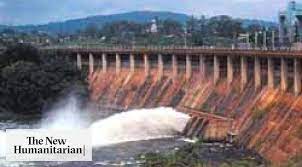Uganda embarks on harnessing of the power of River Nile through construction of renewable energy power plants. The government of Uganda has recognized this potential and has been actively working to develop the country’s hydroelectric power sector.
Importantly, Uganda has several new projects in the pipeline. One such project is the Isimba Hydropower Plant, which is currently under construction on the Victoria Nile. Noteworthy, Isimba Plant is 40 kilometers downstream from the Bujagali plant. Additionally, the Isimba plant is expected to have an installed capacity of 183 MW.
Another major project in the works is the Karuma Hydropower Plant, which is being constructed on the White Nile. Moreover, Karuma Hydropower Plant is 110 kilometers downstream from the town of Karuma. The Karuma plant will have an installed capacity of 600 MW, making it the largest hydroelectric power plant in Uganda.
Read also: Uganda embarks on US$83m electric power distribution project
Uganda’s Renewable Power Capacity on River Nile
Uganda has significantly been harnessing renewable power from the river Nile over the years. Reportedly, one of the most significant hydroelectric projects in Uganda is the Bujagali Hydropower Plant. Located 8 kilometers north of the town of Jinja, the Bujagali plant has an installed capacity of 250 megawatts (MW). The project was developed as a public-private partnership between the government of Uganda, the Aga Khan Fund for Economic Development. Noteworthy, the Bujagali plant has significantly increased Uganda’s power generation capacity. Furthermore, it has helped to reduce the country’s reliance on expensive and polluting fossil fuels.
In addition to Bujagali plant, Uganda has several other hydroelectric power plants in operation, including the Nalubaale and Kiira plants. The Nalubaale plant, formerly known as Owen Falls Dam, was commissioned in 1954 and has installed capacity of 180 MW. The Kiira plant, which was commissioned in 2000, has an installed capacity of 200 MW. Together, these three plants account for the majority of Uganda’s hydroelectric power generation.

